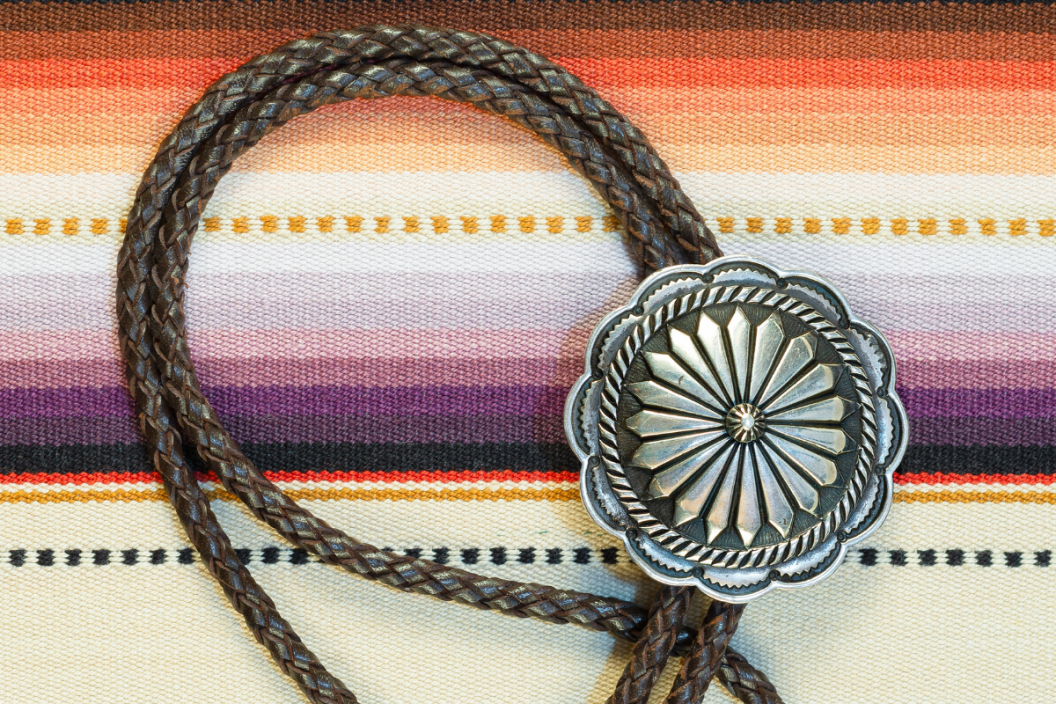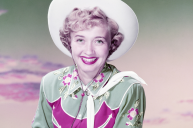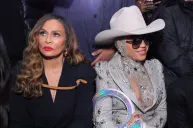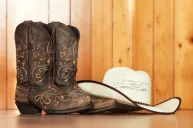Bolo ties consist of a length of cord or leather, often braided, with metal tips on each end, worn around the neck with a decorative clasp or slide holding it in place. As reported by Native Times, the design has a few precedents. Per Eric Singleton of the National Cowboy Museum, "There were some Victorian-era jewelry accessories that really look very similar to the bolo tie...It wasn't really until the 1940s that you see...that same ornament rise up and become an official kind of neckwear... It was a little bit more relaxed and I think really embraced Western-style more." Kachina House notes that Native American men from Zuni, Hopi and Navajo tribes used string or shell-shaped objects to hold their neck scarves in place, eventually creating silver slides with intricate, inlaid turquoise designs to serve the same purpose.
Videos by Wide Open Country
SantaFe.com quotes Heard Museum Shop manager Byron Hunter, Jr. describing Native American craftspeople making bolo ties in his own father's shop in Phoenix, Arizona in the 1940s. A 1953 Western wear catalog advertisement is thought to be the first documentation of a bolo tie; the ad read "New... New... New... 'String-A-Long' Western Tie" and featured rayon strings that came in different colors, held in place by a jeweled leather slide.
The first "official" bolo tie design is generally credited to Victor E. Cedarstaff, an Arizona silversmith who is said to have found inspiration when his hat flew off while he and some friends were on horseback, according to Liberty Leather Goods. He used his silver-bordered hat band to secure the hat around his neck. His friends complimented him on his "new tie," which led him to create a line of accessories made up of a braided leather string, with silver tips placed on each end to prevent fraying, with a sliding turquoise stone clasp used to keep the string in place around the neck. He called it a "bolo tie" after the boleadoras used by Argentine gauchos as weapons, which per Flight Toys were made up of two leather cords with weights on the ends.
Cedarstaff applied for a patent in 1954. As archived by the United States Patent and Trademark Office, Cedarstaff's application referred to his product as "Slide For A Necktie" and detailed its improvement to traditional "slide-type neckties," claiming his version "tends to stay in place at the neck rather than slip downwardly in an undesired manner...and yet will also slide freely up and down the braid without scuffing the braid." Cedarstaff was granted his patent in 1959.
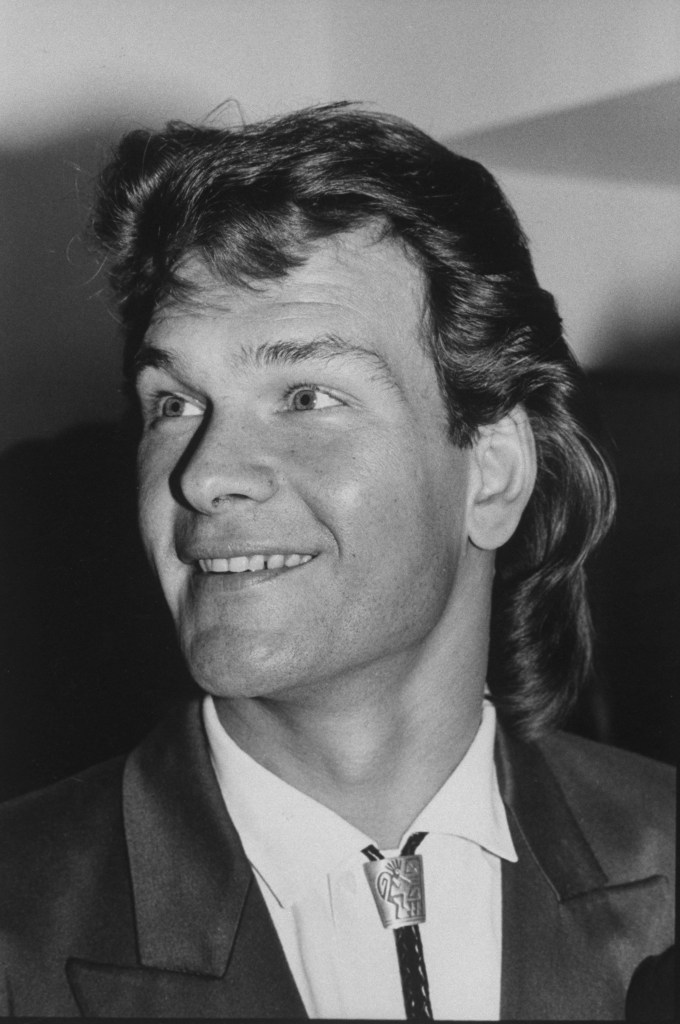
Photo by Robin Platzer/Getty Images
Of course, as the School For Advanced Research points out "Credit is often given to those who filed the first patents, not those who fashioned the first designs based on scarf slides and tribal neck ornaments. Pueblo and Diné artists weren't just responding to tourist trends in the early to mid-twentieth century: they were repurposing materials, restructuring designs, and reimagining Western style."
How to Wear a Bolo Tie
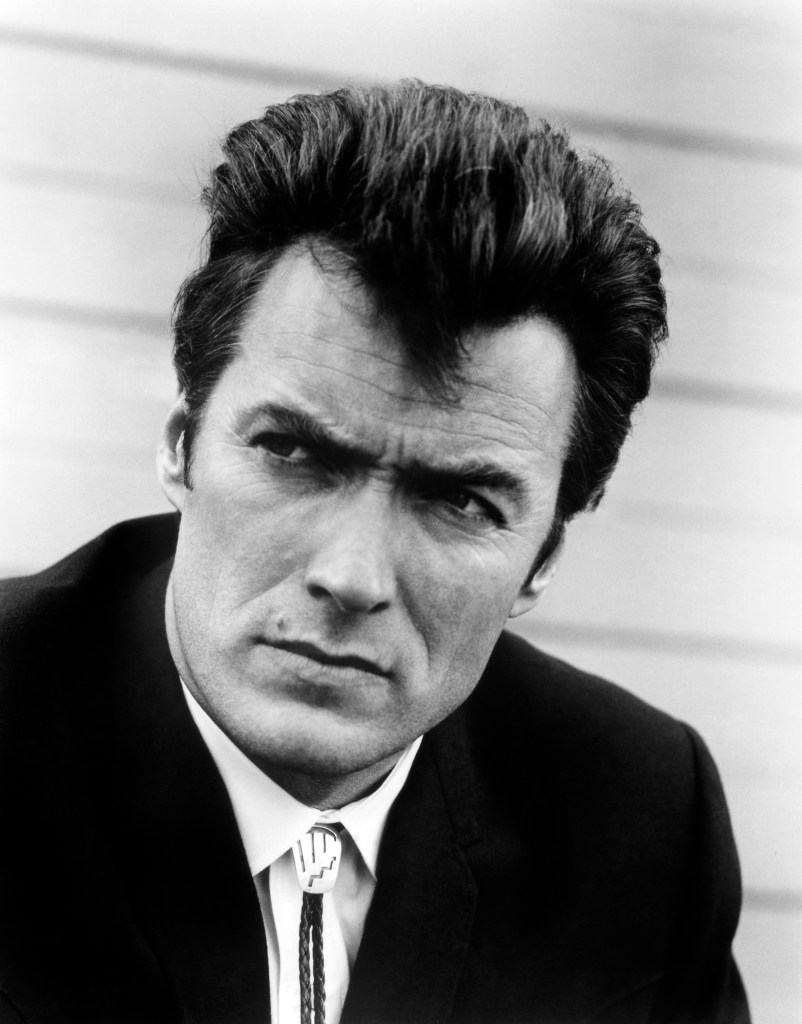
Photo by Herbert Dorfman/Corbis via Getty Images
So what is the proper way to wear a bolo tie? It's traditionally an accessory within Western wear, so many people sporting a bolo tie will also don a cowboy hat, a collared and yoked Western shirt, denim jeans, and cowboy boots. Roy Rogers and other 1950s celebrity cowboys often accessorized with them, and they made appearances in the 1980 John Travolta hit Urban Cowboy, bringing them and Western wear in general back into American popular culture. Travolta later gave the bolo a very different vibe when he wore one with a simple white shirt and black suit for his role as gangster Vincent Vega in 1994's Pulp Fiction.
Per Our Everyday Life, rockabilly bands accessorized with bolo ties in the 1980s, and they even crossed over into New Wave and Romantic looks, in which they were often paired with white Edwardian-style shirts, as seen on Duckie Dale as portrayed by Jon Cryer, who wore both a casual bolo tie as day wear as well as a formal jeweled one to the prom in 1986's Pretty In Pink. As reported by The Daily Edge, Colin Farrell broke the internet in 2015 when he wore one on True Detective. "Psychedelic outlaw cowboy" star Orville Peck is often seen wearing one along with his trademark fringed face mask and even collaborated with designer Pamela Love on one featuring his face and mask as the clasp.
If you're just getting started with bolo ties, Stages West Boots & Apparel recommends pulling the clasp down a few inches for a more laid-back look, perhaps over a button-down shirt with one or two buttons undone. You can also wear one over a t-shirt to bring a little Western flair to even the most basic outfit. Women can and do wear them in the same manner or as they might wear a necklace. A more buttoned-up, formal look can also be accessorized with a bolo tie, perhaps with the slide drawn up to the collar. However, you rock your bolo tie, be prepared to attract attention. It's a strong, confident look backed by tradition and classic style.
Editor's Note: Products featured on Wide Open Country are independently selected by our editors. However, when you buy something through our links, we may earn a commission.
